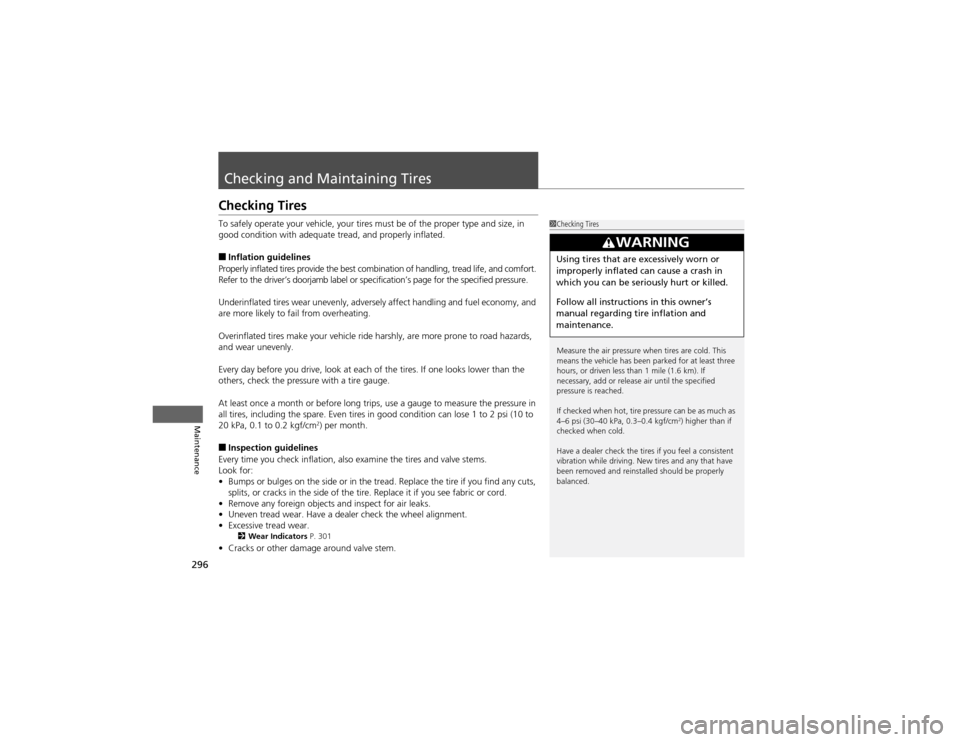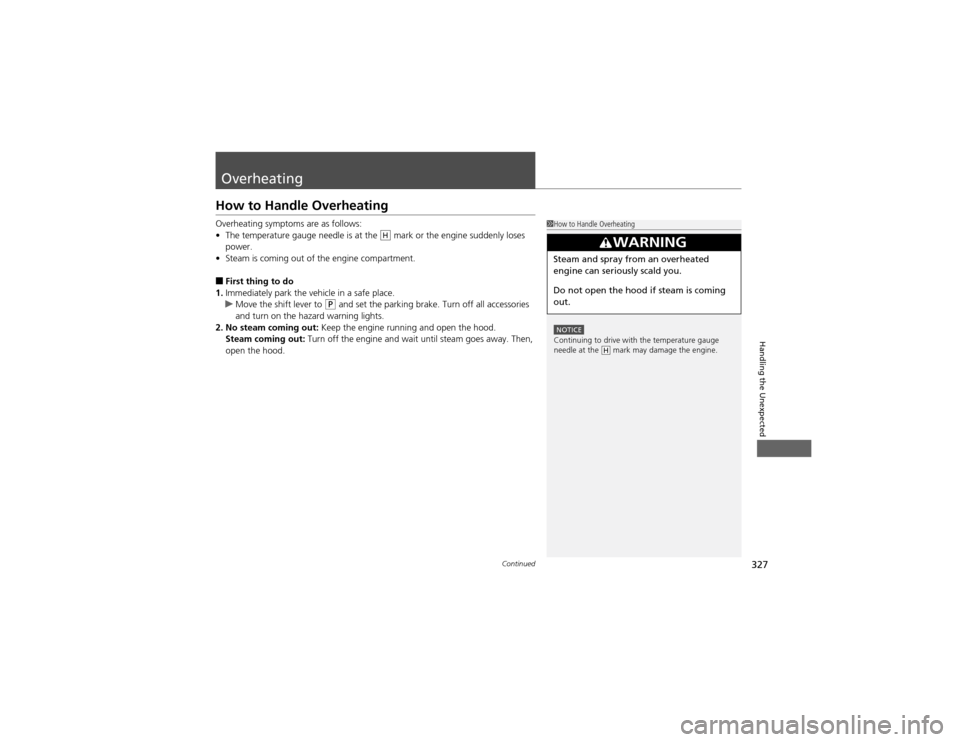2012 HONDA CR-V overheating
[x] Cancel search: overheatingPage 1 of 361

Contents
This owner’s manual should be considered a permanent part of the
vehicle and should remain with the vehicle when it is sold.
This owner’s manual covers all models of your vehicle. You may find
descriptions of equipment and features that are not on your
particular model.
Images throughout this owner’s manual (including the front cover)
represent features and equipment that are available on some, but
not all, models. Your particular model may not have some of these features.
This owner’s manual is for vehicles sold in the United States and Canada.
The information and specifications included in this publication were
in effect at the time of approval for printing. Honda Motor Co., Ltd.
reserves the right, however, to discontinue or change specifications
or design at any time without notice and without incurring any
obligation.2 Safe Driving P. 23For Safe Driving P. 24 Seat Belts P. 29 Airbags P. 37
2Instrument Panel P. 67Indicators P. 68 Gauges and Displays P. 77
2Controls P. 95Setting the Clock P. 96 Locking and Unlocking the Doors P. 97
Opening and Closing the Moonroof *
P. 110
Adjusting the Seats P. 122
Climate Control System *
P. 145
2 Features P. 149Audio System P. 150 Audio System Basic Operation P. 153
General Information on the Audio System P. 190
2Driving P. 225Before Driving P. 226 Towing a Trailer P. 231Parking Your Vehicle P. 257Multi-View Rear Camera P. 258
2Maintenance P. 265Before Performing Maintenance P. 266 Maintenance Minder™ P. 269
Checking and Maintaining Wiper Blades P. 292
Remote Control and Wireless Headphone Care *
P. 307
2 Handling the Unexpected P. 315Tools P. 316 If a Tire Goes Flat P. 317
Overheating P. 327 Indicator, Coming On/Blinking P. 329
2Information P. 339Specifications P. 340 Identification Numbers P. 342
Emissions Testing P. 345 Warranty Coverages P. 347
Main Menu2012 CR-V Online Reference Owner's Manual
Page 19 of 361

18
Quick Reference Guide
Handling the Unexpected (P 315)
Flat Tire (P 317)
● Park in a safe location and replace the
flat tire with the compact spare tire in the
cargo area.
Indicators Come On
(P 329) ● Identify the indicator and consult the
owner's manual.
Engine Won't Start
(P 323) ●If the battery is dead, jump start using a
booster battery.
Blown Fuse (P 333)
● Check for a blown fuse if an electrical
device does not operate.Overheating (P 327)
● Park in a safe location. If you do not see
steam under the hood, open the hood,
and let the engine cool down.
Emergency Towing
(P 336) ● Call a professional towing service if you
need to tow your vehicle.
Page 78 of 361

77
Instrument Panel
Gauges and Displays
Gauges
Gauges include the speedometer, tachometer, fuel gauge, and related indicators.
They are displayed when the ignition switch is in ON
(w.
Displays your driving speed in mph (U.S.) or km/h (Canada).
Shows the number of engine revolutions per minute.
Displays the amount of fuel left in the fuel tank.
Displays the temperature of the engine coolant.
■Speedometer
■Tachometer
■Fuel Gauge
■Temperature Gauge
1Fuel Gauge
NOTICEYou should refuel when the reading approaches .
Running out of fuel can cause the engine to misfire,
damaging the catalytic converter.
The actual amount of remaining fuel may differ from
the fuel gauge reading.E
1Temperature Gauge
NOTICEDriving with the temperature gauge pointer in the
upper zone can cause serious engine damage. Pull
safely to the side of the road and allow engine
temperature to return to normal. 2 Overheating P. 327
Page 297 of 361

296
Maintenance
Checking and Maintaining Tires
Checking Tires
To safely operate your vehicle, your tires must be of the proper type and size, in
good condition with adequate tread, and properly inflated. ■Inflation guidelines
Properly inflated tires provide the best combination of handling, tread life, and comfort.
Refer to the driver’s doorjamb label or specification’s page for the specified pressure.
Underinflated tires wear unevenly, adversely affect handling and fuel economy, and
are more likely to fail from overheating.
Overinflated tires make your vehicle ride harshly, are more prone to road hazards, and wear unevenly.
Every day before you drive, look at each of the tires. If one looks lower than the
others, check the pressure with a tire gauge.
At least once a month or before long trips, use a gauge to measure the pressure in
all tires, including the spare. Even tires in good condition can lose 1 to 2 psi (10 to
20 kPa, 0.1 to 0.2 kgf/cm 2
) per month.
■ Inspection guidelines
Every time you check inflation, also examine the tires and valve stems.Look for:• Bumps or bulges on the side or in the tread. Replace the tire if you find any cuts,
splits, or cracks in the side of the tire. Replace it if you see fabric or cord.
• Remove any foreign objects and inspect for air leaks.
• Uneven tread wear. Have a dealer check the wheel alignment.
• Excessive tread wear.
2 Wear Indicators P. 301
• Cracks or other damage around valve stem.
1Checking Tires
Measure the air pressure when tires are cold. This
means the vehicle has been parked for at least three
hours, or driven less than 1 mile (1.6 km). If
necessary, add or release air until the specified
pressure is reached.
If checked when hot, tire pressure can be as much as
4–6 psi (30–40 kPa, 0.3–0.4 kgf/cm 2
) higher than if
checked when cold.
Have a dealer check the tires if you feel a consistent
vibration while driving. New tires and any that have
been removed and reinstalled should be properly balanced.
3WARNING
Using tires that are excessively worn or
improperly inflated can cause a crash in
which you can be seriously hurt or killed.
Follow all instruction s in this owner’s
manual regarding tire inflation and
maintenance.
Page 316 of 361

315
Handling the UnexpectedThis chapter explains how to h andle unexpected troubles.
Tools
Types of Tools .................................. 316
If a Tire Goes Flat Changing a Flat Tire ......................... 317
Engine Does Not Start Checking the Engine ........................ 323
Jump Starting .................................... 324
Shift Lever Does Not Move .............. 326
Overheating How to Handle Overheating ............. 327 Indicator, Coming On/Blinking
If the Low Oil Pressure Indicator Comes
On ............................................. 329
If the Charging System Indicator Comes
On ................................................. 329
If the Malfunction Indicator Lamp Comes On or Blinks ................................... 330
If the Brake System Indicator Comes On ....... 331If the EPS System Indicator Comes On ......... 331If the Low Tire Pressure Indicator Comes
On ................................................. 332
If the TPMS Indicator Comes On ...... 332 Fuses
Fuse Locations ................................. 333
Inspecting and Changing Fuses ........ 335
Emergency Towing ........................... 336
When You Cannot Open the Tailgate..... 337
Page 328 of 361

327
Continued
Handling the Unexpected
Overheating
How to Handle Overheating
Overheating symptoms are as follows: •
The temperature gauge needle is at the mark or the engine suddenly loses
power.
• Steam is coming out of the engine compartment.
■ First thing to do
1. Immediately park the vehicle in a safe place.
uMove the shift lever to (P and set the parking brake. Turn off all accessories
and turn on the hazard warning lights.
2. No steam coming out: Keep the engine running and open the hood.
Steam coming out: Turn off the engine and wait until steam goes away. Then,
open the hood.
1How to Handle Overheating
NOTICEContinuing to drive with the temperature gauge
needle at the mark may damage the engine.
3WARNING
Steam and spray from an overheated
engine can seriously scald you.
Do not open the hood if steam is coming
out.
H
H
Page 329 of 361

uuOverheatinguHow to Handle Overheating
328
Handling the Unexpected
■ Next thing to do
1.Check that the cooling fan is operating and
stop the engine once the temperature
gauge needle comes down.
uIf the cooling fan is not operating,
immediately stop the engine.
2. Once the engine has cooled down, inspect
the coolant level and check the cooling
system components for leaks.
uIf the coolant level in the reserve tank is
low, add coolant until it reaches the
MAX mark.
uIf there is no coolant in the reserve tank,
check that the radiator is cool. Cover the
radiator cap with a heavy cloth and open
the cap. If necessary, add coolant up to
the base of the filler neck, and put the
cap back on.
■ Last thing to do
Once the engine has cooled sufficiently, restart it and check the temperature gauge.
If the temperature needle has gone down, resume driving. If it has not gone down,
contact a dealer for repairs.
1How to Handle Overheating
If the coolant is leaking, contact a dealer for repairs.
Use water as an emergency/temporary measure only.
Have a dealer flush the system with proper antifreeze
as soon as possible.
3WARNING
Removing the radiator cap while the
engine is hot can cause the coolant to spray
out, seriously scalding you.
Always let the engine and radiator cool
down before removing the radiator cap.
Reserve
Tank
MAX
MIN
Page 353 of 361

352
Index
Jump Starting .......................................... 324
Maintenance (Checking the Battery) ........ 305
Maintenance (Replacing).......................... 306
Behind a Motorhome ............................... 235
Belts (Seat) .................................................. 29
Beverage Holders ...................................... 134
Bluetooth ® Audio ..................................... 171
Bluetooth ® HandsFreeLink ®..................... 194
Booster Seats (For Children) ....................... 64
Brake System ............................................. 253
Anti-lock Brake System (ABS) ................... 255
Brake Assist System ................................. 256
Fluid ........................................................ 283
Foot Brake ............................................... 254
Indicator ............................................ 68, 331
Parking Brake .......................................... 253
Brightness Control (Instrument Panel) .... 117
Bulb Replacement ..................................... 285
Brake Light, Taillight, Back-Up Light, Rear Turn
Signal Light and Lower Rear Side Marker
Light ...................................................... 288
Fog Lights ................................................ 286
Front Turn Signal/Parking Light ................ 288
Headlights ............................................... 285
High-Mount Brake Light .......................... 291
Rear License Plate Light............................ 291
Side Marker Lights ................................... 287
Upper Rear Side Marker/Taillight .............. 290
Bulb Specifications .................................... 340 C
Carbon Monoxide Gas
............................... 65
Cargo Hook ............................................... 137
Cargo Side Net .......................................... 136
Carrying Cargo ................................. 227, 229
CD Player ................................................... 160
Certification Label .................................... 342
Changing Bulbs ........................................ 285
Charging System Indicator ................. 69, 329
Child Safety ................................................. 52
Childproof Door Locks............................. 102
Child Seat .................................................... 52
Booster Seats ............................................ 64
Child Seat for Infants................................. 54
Child Seat for Small Children ..................... 55
Installing a Child Seat with a Lap/Shoulder Seat
Belt ......................................................... 60
Larger Children ......................................... 63
Rear-facing Child Seat ............................... 54
Selecting a Child Seat ................................ 56
Childproof Door Locks ............................. 102
Cleaning the Exterior ............................... 312
Cleaning the Interior ................................ 310
Climate Control System ............................ 145
Changing the Mode ................................ 145
Defrosting the Windshield and Windows ............................................... 146
Dust and Pollen Filter............................... 309
Recirculation/Fresh Air Mode ..... .............. 145
Sensors ................................................... 148
Synchronized Mode................................. 147 Using Automatic Climate Control ............ 145
Clock ........................................................... 96
Coat Hook ................................................ 136
Compact Spare Tire .......................... 317, 341
Compass .................................................... 223
Console Compartment ............................. 133
Controls ...................................................... 95
Coolant (Engine) ...................................... 280
Adding to the Radiator ...... ..................... 281
Adding to the Reserve Tank .................... 280
Overheating ............................................ 327
Creeping (Automatic Transmission) ........ 242
Cruise Control .......................................... 245
Indicator ................................................... 76
Cup Holders .............................................. 134
Customer Service Information ................ 350
Customized Features ................................. 84
D
Daytime Running Lights .......................... 114
Dead Battery ............................................ 324
Defrosting the Windshield and Windows ......................................... 144, 146
Detachable Anchor .................................... 34
Devices that Emit Radio Waves ............... 343
Dimming
Headlights .............................................. 112
Rearview Mirror ...................................... 120
Dipstick (Engine Oil) ................................ 276
Directional Signals (Turn Signal) ............. 112